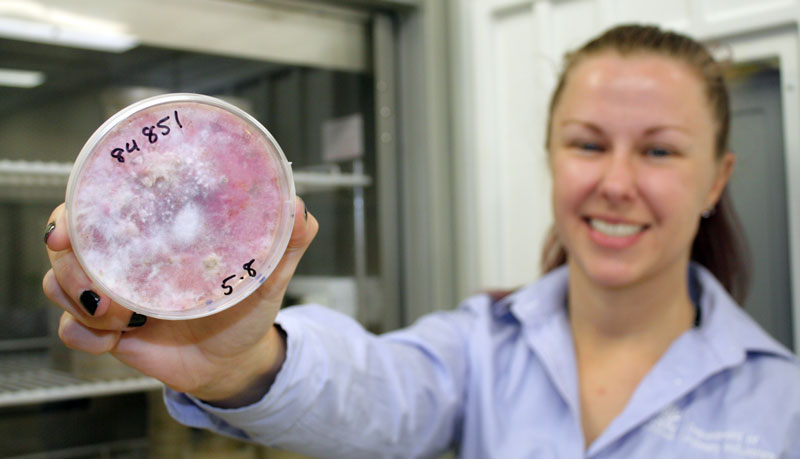
A priceless collection of fungi has been replicated for the NSW Department of Primary Industries (DPI) to support research and management of biosecurity and food safety issues.
NSW DPI Plant Pathology and Mycology Herbarium curator, Jordan Bailey, said the fungal culture collection of Australia's national science agency CSIRO has played an important role in Australian food industry research since its establishment by Dr John Pitt in 1970.
"The original Melbourne-based CSIRO collection contains fungal strains dating back more than 100 years and we are lucky to have a copy of this valuable resource at our Orange Agricultural Institute (OAI)," Dr Bailey said.
"The fungal collection contains living specimens unlike many scientific collections, which are dead and preserved - dinosaur skeletons, pinned insects and taxidermy animals.
"Fungal cultures are unique as they can be placed in stasis and remain dormant in long-term storage, where they are freeze-dried and vacuum sealed in glass ampoules.
"We can revive them as needed, sometimes decades later, to extend research studies which examine how these fungi live and cause diseases, or to sequence their genomes."
This unique and invaluable collection of fungal cultures will be accessible for researchers in the scientific community and food industry, including the NSW Food Authority, who worked with NSW DPI and CSIRO to establish the OAI collection.
CSIRO scientist Nai Tran-Dinh, who worked on the collection with the late Dr Pitt, said it was one of the most extraordinary collections of its type in the world.
"The collection has more than 900 species from 114 countries, including 400 type cultures, the original strain on which the description of a species is based, some of which were isolated more than 100 years ago," Dr Tran-Dinh said.
"With more than 5500 isolates in the culture collection, it has expanded over its lifetime to include all types of food spoilage fungi and those from industrial and medical sources.
"The collection is an important reference source for strains of species which cause post-harvest diseases and food spoilage and those used in food production, such as Penicillium roqueforti for making blue cheese."
From the early 1960s, Dr Pitt who helped ensure the collection was duplicated in collaboration with NSW DPI, researched food spoilage and mycotoxigenic fungi.
He extensively investigated xerophilic fungi and now NSW DPI has the world's best collection of these fungi, which can grow in conditions of low water availability and spoil dried or partly dried foods, animal foods and many other substrates, including textiles, leather goods, books and paintings, photographic slides and microscope lenses.






